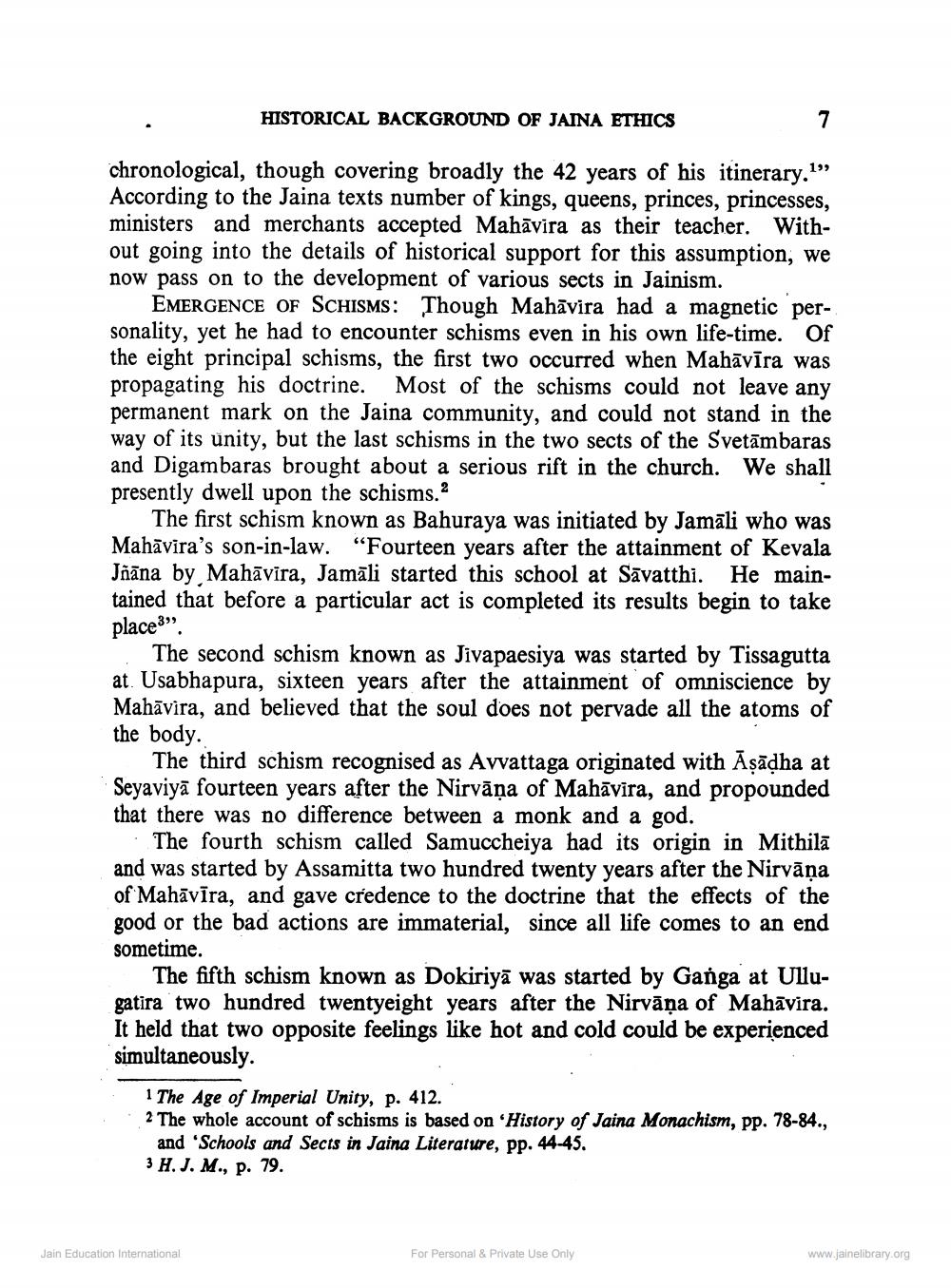________________
HISTORICAL BACKGROUND OF JAINA ETHICS
7
chronological, though covering broadly the 42 years of his itinerary.1": According to the Jaina texts number of kings, queens, princes, princesses, ministers and merchants accepted Mahāvira as their teacher. Without going into the details of historical support for this assumption, we now pass on to the development of various sects in Jainism.
EMERGENCE OF SCHISMS: Though Mahavira had a magnetic personality, yet he had to encounter schisms even in his own life-time. Of the eight principal schisms, the first two occurred when Mahāvīra was propagating his doctrine. Most of the schisms could not leave any permanent mark on the Jaina community, and could not stand in the way of its unity, but the last schisms in the two sects of the Svetāmbaras and Digambaras brought about a serious rift in the church. We shall presently dwell upon the schisms.
The first schism known as Bahuraya was initiated by Jamali who was Mahāvira's son-in-law. “Fourteen years after the attainment of Kevala Jñāna by Mahāvīra, Jamāli started this school at Sāvatthi. He maintained that before a particular act is completed its results begin to take
place3".
The second schism known as Jivapaesiya was started by Tissagutta at. Usabhapura, sixteen years after the attainment of omniscience by Mahāvira, and believed that the soul does not pervade all the atoms of the body.
The third schism recognised as Avvattaga originated with Āsādha at Seyaviyā fourteen years after the Nirvāṇa of Mahāvira, and propounded that there was no difference between a monk and a god.
The fourth schism called Samuccheiya had its origin in Mithila and was started by Assamitta two hundred twenty years after the Nirvāṇa of Mahāvīra, and gave credence to the doctrine that the effects of the good or the bad actions are immaterial, since all life comes to an end sometime.
The fifth schism known as Dokiriyā was started by Ganga at Ullugatira two hundred twentyeight years after the Nirvāna of Mahāvira. It held that two opposite feelings like hot and cold could be experienced simultaneously.
1 The Age of Imperial Unity, p. 412. 2 The whole account of schisms is based on ‘History of Jaina Monachism, pp. 78-84.,
and 'Schools and Sects in Jaina Literature, pp. 44-45. 3 H.J. M., p. 79.
Jain Education International
For Personal & Private Use Only
www.jainelibrary.org




